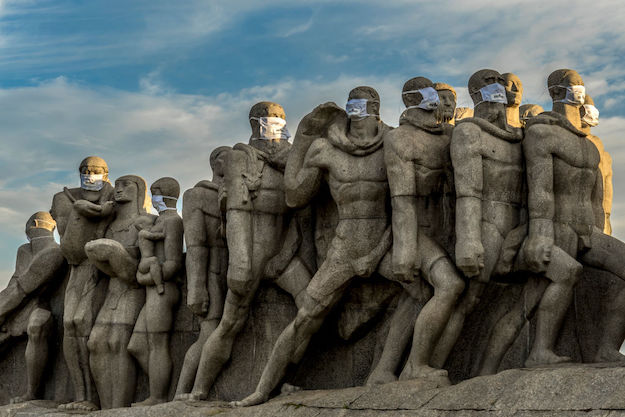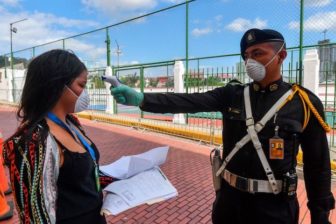Wires and guards have been deployed in São Paulo – to protect a statue. Borba Gato is considered one of Brazil’s more prominent bandeirantes, who were marauders that expanded the borders of colonial Brazil hunting and enslaving indigenous people. Borba Gato represents “an enslaver, a kidnapper, who killed indigenous peoples and brought more enslavement to the province of São Paulo,” said Keila Grinberg, a history professor at the Federal University of Rio de Janeiro. “In Brazil, we don’t confront our past. And that is what made it possible for us to pay homage to slave traders.”
Protesters have painted over Gato’s statue before, and calls have intensified to take it down altogether. Since the statue of slave trader Edward Colston was dragged from its plinth and thrown into the River Avon in Bristol, England on June 7, inspired by protests in the U.S., the issue has again been revived — in São Paulo and across Latin America, where monuments and public spaces celebrating slave traders and slave holders are everywhere.
But Cândido Domingues, professor at the Universidade do Estado da Bahia, says Brazil is more in the “discussion phase” of what he dubbed the “Colston effect” of pulling down controversial statues. Right after the Colston statue went underwater, Domingues and a group of scholars in Salvador, Brazil’s first capital and where the population is 80% black, started to map monuments and statues dedicated to slave traffickers and slaveholders. The group plans to launch a website that also lists forgotten and unmarked places, such as the slave markets that were dispersed throughout the city.
Demands to rename spaces and monuments that honor slaveholders have been taking place in Brazil for the past two decades, according to Grinberg. But some Brazilians are developing “new historical sensibilities towards the past,” Grinberg told AQ, “calling for a change in the way we portray history in public spaces.”
In Colombia, calls across social media demand a change at President Iván Duque’s alma mater, Universidad Sergio Arboleda, named after a slaveholder, and officials in Cali are themselves proposing to relocate a statue of a conquistador from a public space to a reconciliation memorial.
The debate about these and other controversial statues is more of a “discussion about the present, not about the past,” said Grinberg. “Monuments and memorials are a way of punctuating particular histories— when people engage with them, they open up important conversations,” said Katherine Hite, a professor of political science at Vassar College who focuses on the politics of memory.
Statues of Pedro de Valdivia, the founder of Santiago, were toppled or beheaded in cities such as Concepción and Temuco, during the peak of Chile’s public demonstrations in October and November of 2019. “Valdivia was considered the ultimate conquistador,” said Hite, and “symbolically represents some of the deep historical exclusion of indigenous and poor communities in Chile.”
Across Latin America, people have joined protests in support of the Black Lives Matter movements, in the Dominican Republic, Colombia, Brazil and Argentina, despite the coronavirus contagion risk. Latin America’s legacies of racial discrimination and police brutality are reviving old debates about who is honored in public spaces and starting new conversations about what national heroes represent today. Still, public health concerns may limit the impact of the “Colston effect”. Domingues notes that regardless, at least in Brazil, “this debate is here to stay.”
—
Sweigart is an editor at AQ.








